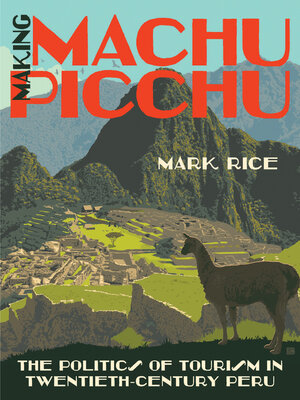
Sign up to save your library
With an OverDrive account, you can save your favorite libraries for at-a-glance information about availability. Find out more about OverDrive accounts.
Find this title in Libby, the library reading app by OverDrive.



Search for a digital library with this title
Title found at these libraries:
| Library Name | Distance |
|---|---|
| Loading... |
Speaking at a 1913 National Geographic Society gala, Hiram Bingham III, the American explorer celebrated for finding the “lost city” of the Andes two years earlier, suggested that Machu Picchu “is an awful name, but it is well worth remembering.” Millions of travelers have since followed Bingham’s advice. When Bingham first encountered Machu Picchu, the site was an obscure ruin. Now designated a UNESCO World Heritage Site, Machu Picchu is the focus of Peru’s tourism economy. Mark Rice’s history of Machu Picchu in the twentieth century—from its “discovery” to today’s travel boom—reveals how Machu Picchu was transformed into both a global travel destination and a powerful symbol of the Peruvian nation.
Rice shows how the growth of tourism at Machu Picchu swayed Peruvian leaders to celebrate Andean culture as compatible with their vision of a modernizing nation. Encompassing debates about nationalism, Indigenous peoples' experiences, and cultural policy—as well as development and globalization—the book explores the contradictions and ironies of Machu Picchu’s transformation. On a broader level, it calls attention to the importance of tourism in the creation of national identity in Peru and Latin America as a whole.
Rice shows how the growth of tourism at Machu Picchu swayed Peruvian leaders to celebrate Andean culture as compatible with their vision of a modernizing nation. Encompassing debates about nationalism, Indigenous peoples' experiences, and cultural policy—as well as development and globalization—the book explores the contradictions and ironies of Machu Picchu’s transformation. On a broader level, it calls attention to the importance of tourism in the creation of national identity in Peru and Latin America as a whole.







